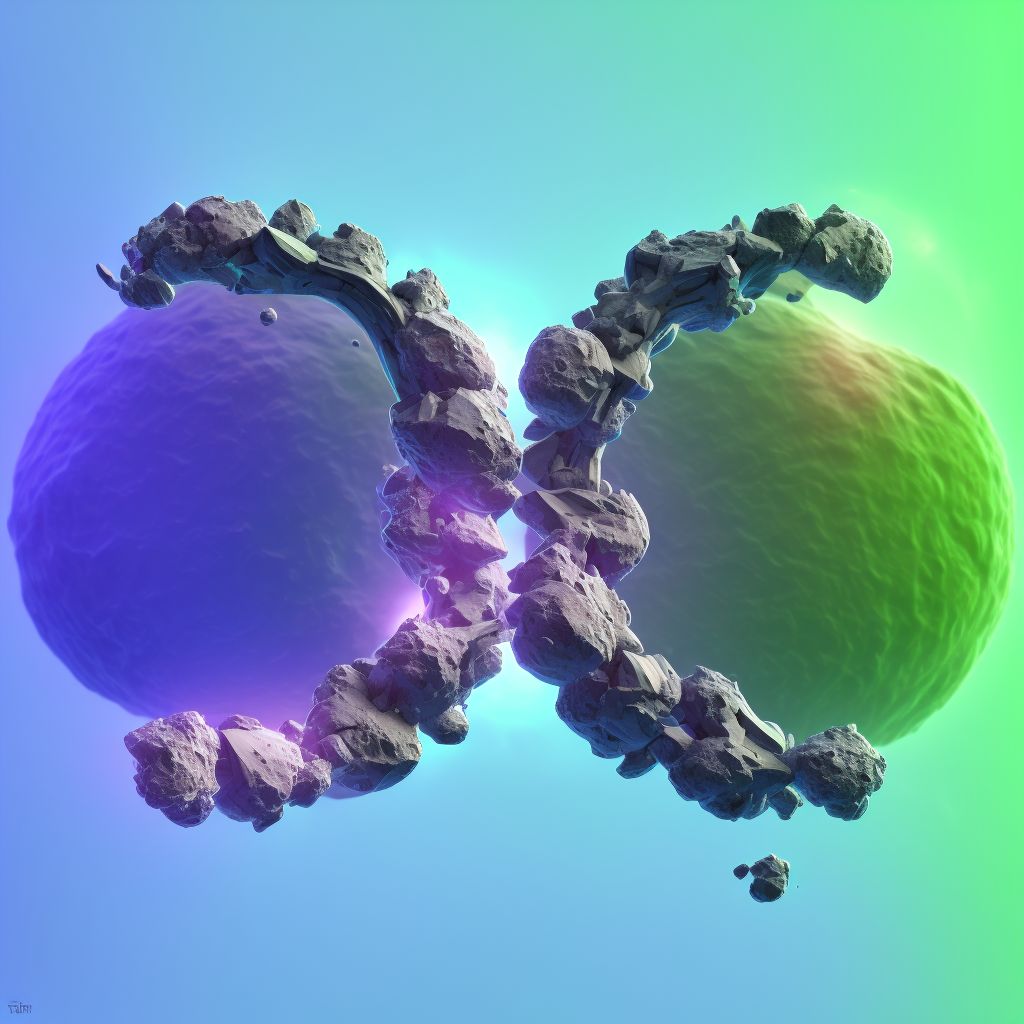
Torus fracture of upper end of right tibia, subsequent encounter for fracture with malunion Save
ICD-10 code: S82.161P
Disease category: S82.161: Torus fracture of upper end of right tibia
Torus Fracture of Upper End of Right Tibia, Subsequent Encounter for Fracture with Malunion
A torus fracture refers to a type of incomplete fracture commonly seen in children's bones, where the bone bends or buckles but does not break completely. In this case, we will focus on a torus fracture of the upper end of the right tibia. The subsequent encounter for the fracture with malunion indicates that the fracture did not heal properly and resulted in a misalignment of the bone.
When a torus fracture occurs, the bone becomes compressed on one side, forming a bulge or bump. It is also known as a "buckle fracture" due to the characteristic appearance of the bone. This type of fracture is often caused by a sudden force applied to the bone, such as a fall or direct blow.
During the subsequent encounter, the healthcare provider evaluates the malunion, which refers to the improper healing of the fractured bone. The malunion can lead to various complications, including pain, limited mobility, and potential deformities. Proper assessment and management are crucial to address these issues.
While it is essential to seek appropriate medical treatment for a torus fracture with malunion, it is equally important to understand preventive measures to reduce the risk of such injuries. Promoting bone health through a balanced diet rich in calcium and vitamin D, regular exercise, and maintaining a safe environment can help prevent fractures.
- Ensure a calcium-rich diet by consuming dairy products, leafy greens, and fortified foods.
- Get sufficient exposure to sunlight for natural vitamin D synthesis.
- Engage in weight-bearing exercises like walking, running, or dancing to strengthen bones.
- Use protective gear during physical activities, such as helmets, knee pads, and shin guards.
It is crucial to consult a healthcare professional for an accurate diagnosis and appropriate treatment of a torus fracture with malunion. They will provide the necessary guidance for a successful recovery and help prevent further complications.
Treatment of Torus fracture of upper end of right tibia, subsequent encounter for fracture with malunion:
Treatment Options for Torus Fracture of Upper End of Right Tibia, Subsequent Encounter for Fracture with Malunion
A torus fracture, also known as a buckle fracture, is a common injury among children and adolescents. It occurs when the bone on one side of the tibia, or shinbone, buckles or bulges due to excessive force. If left untreated or improperly managed, a torus fracture can l...
To see full information about treatment please Sign up or Log in